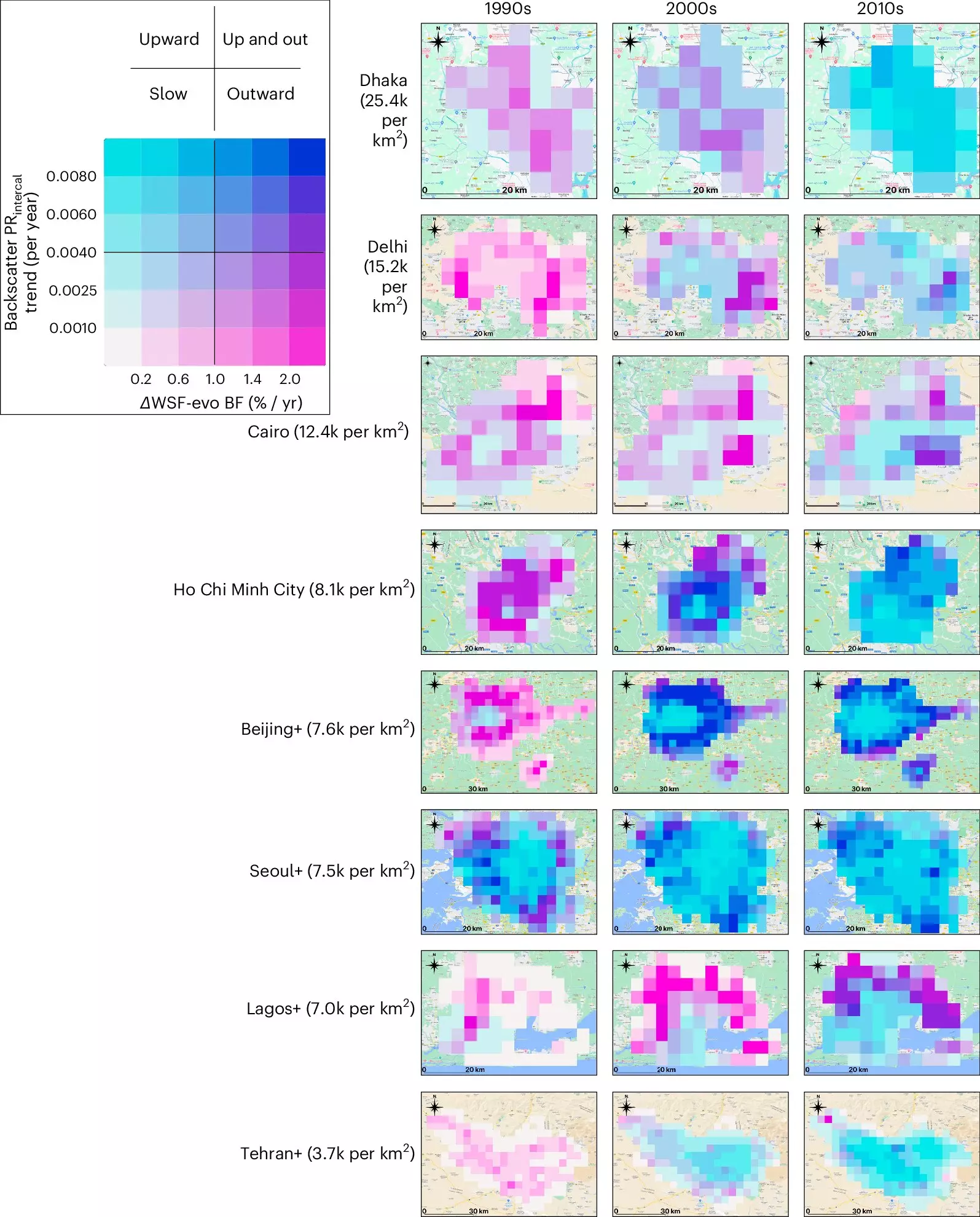

The urban landscape is constantly changing, with cities around the world experiencing significant growth over the past several decades. A recent study published in the journal Nature Cities sheds light on a notable trend – modern cities are now growing more upward than outward. This shift in growth patterns has far-reaching implications for city planners and urban development.
A team of Earth scientists, environmental engineers, and geomaticists conducted a comprehensive study using two types of satellite data from over 1,500 cities globally. By analyzing data from the 1990s to the 2010s, the researchers were able to track the evolution of urban landscapes over time. One type of satellite data provided a two-dimensional perspective of a city’s footprint, while the other type, based on microwaves, offered a three-dimensional view, capturing the vertical growth of cities through the construction of skyscrapers.
The research team discovered a clear trend towards upward growth in modern cities, driven by advancements in construction technology that allow for taller buildings. Economic development was found to be a significant factor influencing the growth patterns of cities, with most urban centers transitioning from outward expansion to upward construction. The study highlighted that this shift was particularly pronounced in cities across regions like North America, Europe, and parts of Asia.
The findings of this study have important implications for urban planners and policymakers tasked with managing the growth of cities. Understanding the shift towards upward growth can help in making informed decisions regarding resource allocation, infrastructure development, and sustainability initiatives. By recognizing the patterns of urban development, city planners can better anticipate future needs and challenges.
While the overall trend points towards upward growth, the study also identified exceptions in certain cities in Africa, China, and Southeast Asia, where outward expansion still outpaces vertical development. These disparities underscore the need for tailored approaches to urban planning that take into account the unique characteristics of each city. By leveraging the insights from this research, urban planners can create strategies to address the challenges of rapid urbanization while maximizing the opportunities for sustainable growth.
The shift from outward to upward growth of modern cities represents a significant transformation in urban landscapes globally. By understanding the driving forces behind this trend and its implications for urban planning, stakeholders can work towards creating vibrant, resilient, and sustainable cities for future generations.
In the world of pharmaceuticals, innovation often hinges on finding new compounds that can lead…
In the heart of the Amazon basin, drastic climate changes present an alarming reality that…
Air fryers have rapidly surged in popularity, captivating home cooks and culinary enthusiasts alike. When…
In an era where technology and social media reign, the importance of sleep often takes…
In an era where environmental consciousness is paramount, the maritime industry has long been scrutinized…
Radionuclides, often relegated to discussions surrounding nuclear energy and radioactive waste, have far-ranging implications for…
This website uses cookies.